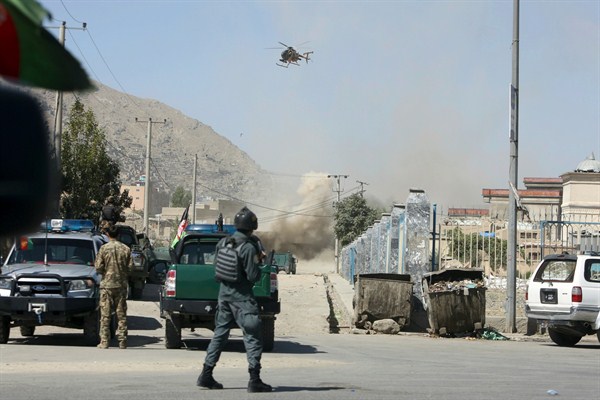Aug. 11 was the beginning of a very difficult week in Afghanistan. After several weeks of growing pressure from the Taliban, over 1,000 of its fighters attacked Ghazni, a city of 270,000 that straddles the vitally important Highway 1 linking Kabul with the south of the country. The attack on Ghazni brought back haunting memories of the battle for Kunduz in the summer of 2015, when the Taliban seized control of a major Afghan city for the first time since 2001.
A series of Taliban attacks across several neighboring provinces compounded an already bad situation. In the Ghormach district of Faryab province, the Taliban killed or captured all but one of the 106 men of an entire Afghan army corps, along with 15 border policemen. The Taliban then overran an Afghan army outpost and checkpoint in Baghlan-e-Markazi district in Baghlan province, killing at least 39 soldiers and police. The most devastating blow, however, came when the Taliban attacked a commando unit guarding Ajristan district in Ghazni province, killing anywhere from 40 to 100 of the Afghan military’s most elite troops.
These setbacks are indicators of both the lackluster state of the Afghan military and the continuing stagnation of a war now entering its 17th year. Yet despite the heavy losses, and putting the political situation in Afghanistan aside, there is reason for some cautious optimism that the Afghan military is making progress amid the chaos.

